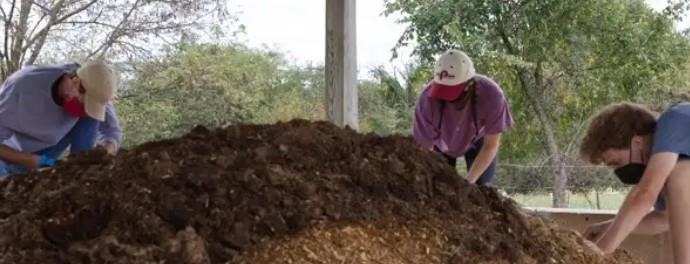From 2010 to 2022, total grain storage capacity in Brazil increased 35%. At the same time, total grain production increased 82%. In the last crop season, when Brazilian farmers harvested an all-time high of 271 million tons of grain, the total grain storage capacity was 183 million tons, resulting in a storage deficit of almost 90 million tons. If a new record is established in the 2022-2023 season, the storage deficit could reach more than 100 million tons (see Figure 1).

The ratio of the storage capacity last year (183 million tons) compared with the total grain produced (271 million tons) was 67%. In other words, it would be possible to store 67% of the grain produced in a single period of the year. In 2010, the ratio was 90%. The Food and Agriculture Organization of the United Nations (FAO) recommends that a country’s storage capacity should be 1.2 times its annual agricultural production.
As a consequence of this deficit, it has become more common in recent years to use silo bags, a portable storage system that creates an oxygen-free environment and prevents development of pests and insects during the storage of grain. In the last crop season, the silo-bag system – involving the use of tarpaulins to cover harvested crops – was commonly used on some farms, especially during the second harvest of corn in the Brazilian Center West.
Grain storage infrastructure comes in many other forms, such as bins, elevators, bunkers, and sheds. These structures have at least two main uses. First, they allow farmers, commercial grain merchants, and end-users to hold commodity inventories. Storing grain to profit from differences in prices addresses variations in grain production and consumption within and across crop marketing years. Second, grain storage helps firms in other ways – such as when commercial elevators are full or too far away to allow for an efficient harvest (see farmdoc daily, November 25, 2020).
Storage Deficit by States
The grain storage deficit in Brazil is concentrated in the Center West states, which are responsible for almost half of the national grain production. In all these states (Mato Grosso, Goiás, and Mato Grosso do Sul), the ratio between the storage capacity and total grain production is below 50%, meaning if the production occurred in a single period of the year, it would be possible to store less than half of the grain. In the largest grain-producing state in Brazil, Mato Grosso, grain production reached 89.5 million tons last season, while the total storage capacity was 42.2 million tons, a ratio of 47% (see Figure 2).

The Matopiba region, a new agricultural frontier in the North and Northeast, also suffers from the disparity between production and storage capacity. The area representing about 10% of Brazilian grain production is formed by the Brazilian state of Tocantins and parts of Maranhão, Piauí, and Bahia. All four states have a ratio between the static capacity and total grain production below 50%. The lowest rates are in Maranhão and Piauí, where the ratio is below 39% (see Figure 2). The transportation and storage infrastructure in Maranhão and Piauí have not kept up with the expansion of this agricultural frontier that has taken place mainly in the last 20 years.
The highest ratios between the static capacity and total grain production in Brazil are in the southern states (Paraná, Rio Grande do Sul, and Santa Catarina), the oldest agriculture areas in Brazil. In Rio Grande do Sul, the third largest soybean-producing state, grain production reached 40.5 million tons last season, while the total storage capacity was 32.3 million tons, a ratio of 79%. In Paraná, the second largest soybean and corn producer, the ratio was 66% (see Figure 2). One factor that mitigates the storage deficit in Brazil is the distribution of the first and second harvests, and the third in some regions, in different seasons.
Low Storage Capacity On-Farms
In Brazil, only 15% of farms have warehouses or silos, according to data from Conab. From 2010 to 2022, the percentage of warehouses on farms in Brazil showed very little growth, with a minimal increase from 14.2% to 15.2%. In the Northeast, 41% of farms have storage capacity, the highest percentage among Brazilian regions. The Center West, the largest agricultural region in Brazil, is in second place, with 22.9% of farms having warehouses or silos. The South has the lowest percentage, with only 5.1% of farms having on-farm storage (see Figure 3).

The Brazilian grain storage picture is very different compared with the United States where on-farm capacity is about 54% of total capacity. In addition, grain storage capacity in the U.S. has consistently increased for the last two decades. This growth has been proportional to increases in crop production (see farmdoc daily, November 25, 2020), which has not happened in Brazil in the last decade.
One of the ways for Brazilian producers to overcome this challenge is to encourage investments in storage structures, especially on farms. Although public and private credit is available for building warehouses, Brazilian producers still need to be convinced about the positive return on this type of investment in the medium and long term.
Conclusions
This article describes how Brazil’s storage capacity has increased from 2010 to 2022. The growth of 35% in storage capacity has not been proportional to grain production, which increased by 82% in the same period. The grain storage deficit in Brazil is concentrated in the Center West states, which are responsible for the most significant national grain production, and in the Matopiba, the new agriculture frontier in the North and Northeast.
On-farm storage capacity has grown slower than off-farm capacity, suggesting that grain merchants are the primary driver for investment in new grain storage capacity. Brazil will probably have an even higher grain storage deficit in the next few years if actions are not taken to increase storage capacity at a faster rate. This situation can represent a risk for future Brazilian agriculture competitiveness.
Source : illinois.edu